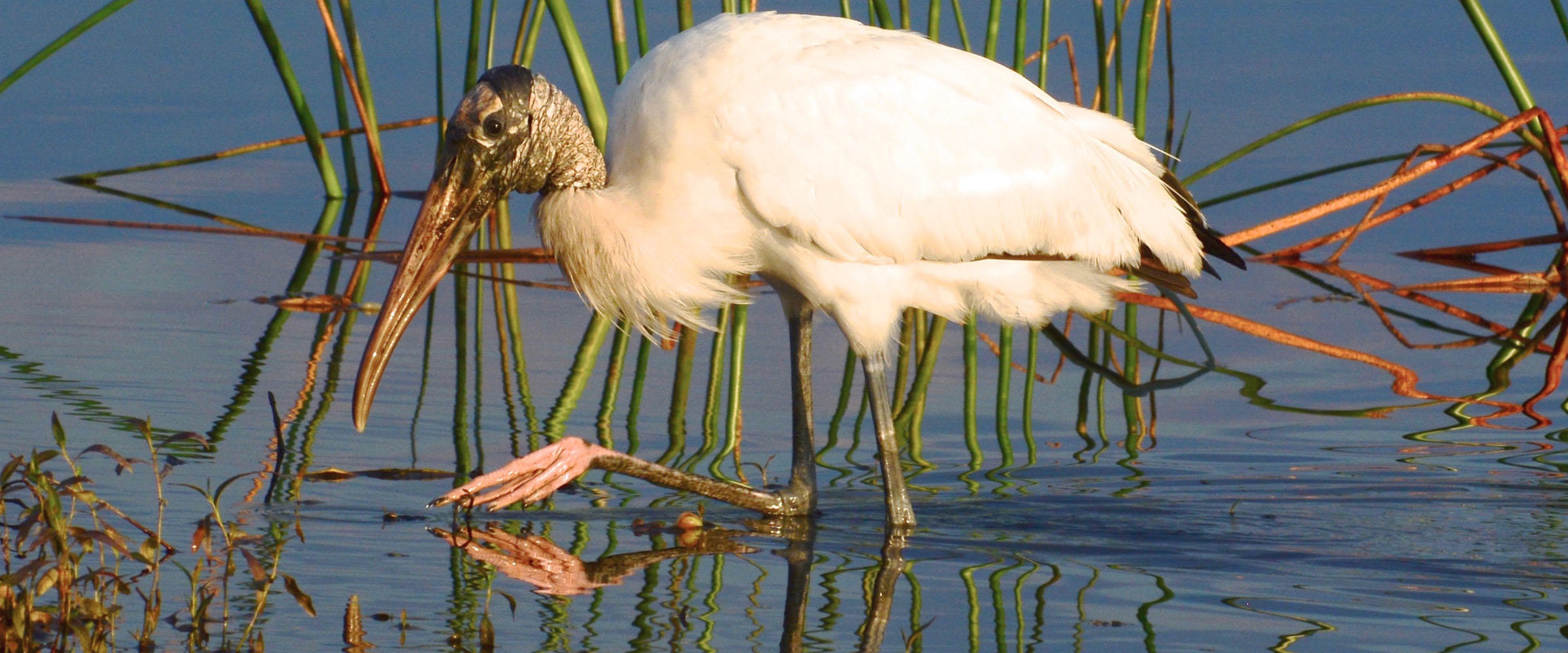Wood Storks did not have a banner nesting season at Corkscrew Swamp Sanctuary, or anywhere in South Florida in the 2019-20 nesting season. Storks were seen around the Sanctuary at the beginning of the season, with some even seen carrying nesting materials, but no nests were recorded in the Corkscrew colony. Across the state, many pairs produced chicks that later starved to death. Why?
According to Shawn Clem, Ph.D., Director of Research at the Sanctuary, this year’s Wood Stork nest failures were probably due to an unusual timing of rainfall in an ecosystem that is already stressed by development and habitat loss.
“Heavy rain in late December inundated wetlands early in the nesting season, delaying the birds’ reproduction and egg-laying,” she said.
By March and April, water levels had dropped back down to favorable foraging conditions which triggered increased nesting, but this was too late. A late start to nesting often results in failure, as Wood Storks must have enough time to fledge their young during the dry season when fish prey are plentiful and can fill the chicks’ high energy demands. Once the rainy season begins, this year in mid-May, water levels rise quickly, fish disperse, and chicks that have not yet fledged are often left to starve as their parents can no longer catch enough fish to feed them.
Wood Storks have demonstrated a shift in nesting locations over the past several decades, with more birds being reported in Georgia and farther north than ever before. According to Clem, while Wood Storks as a species may not be in jeopardy, their departure from historic nesting locations in Southwest Florida and across the Everglades is a strong indicator that the quality of our ecosystem has declined and these other places have become more favorable.
We saw hope for restoration in 2018, when an unusually rainy 2017 put record amounts of water into the Everglades system which led to record numbers of Wood Storks—a sign that “if we restore it, they will come.”
Read more in this article published recently in the Palm Beach Post.
Marsh and Prairie Restoration
Poor Wood Stork Nesting Across South Florida
Their departure from historic nesting locations in Southwest Florida and across the Everglades is a strong indicator that the quality of our ecosystem has declined and these other places have become more favorable.




